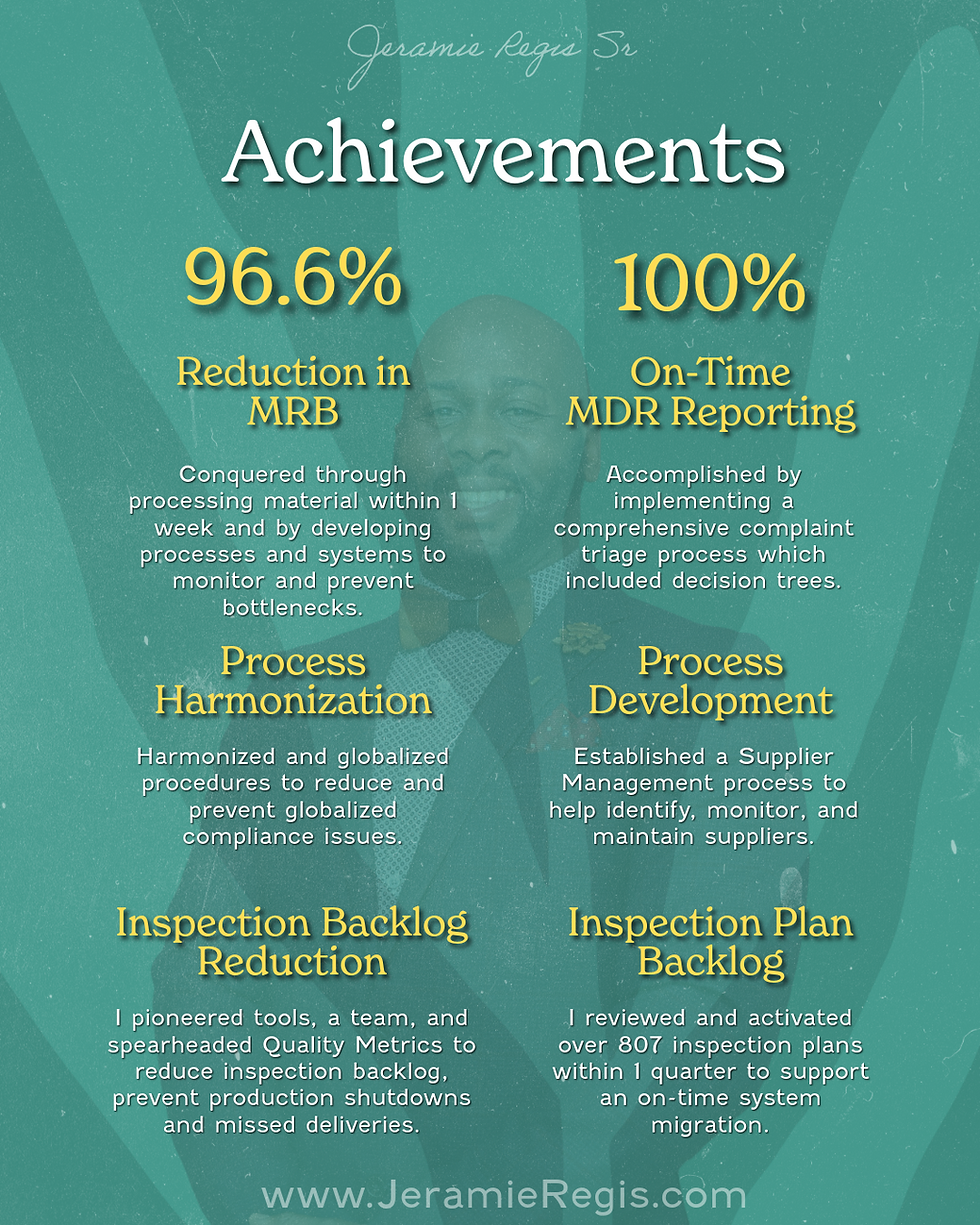From Data to Decisions – How Quality Engineers Drive Continuous Improvement
- jeramieregis
- Jul 22
- 2 min read
Updated: Sep 6

Quality isn’t just about catching problems—it’s about preventing them.
In every quality role I’ve held, from Zyno Medical to JnJ, one thing has remained constant: data drives everything. And when used correctly, it doesn’t just help fix problems—it helps prevent them from happening in the first place.
📈 Quality Metrics That Matter
Daily quality metrics aren’t just spreadsheets—they’re stories. They tell us:
Which processes are trending out of control
Where suppliers are slipping
Why production is falling behind
How corrective actions are performing
At multiple companies, I was the data analyst behind the scenes, building dashboards, structuring daily reports, and delivering insights to leadership. Whether using Power BI, Qlik, or Excel, I knew how to spot the signal in the noise.
🧠 From Insight to Action
It’s not enough to collect data—you have to know what to do with it. As a Quality Engineer, I’ve led initiatives where we:
Identified recurring non-conformances and launched targeted CAPAs
Streamlined inspection plans to reduce incoming backlog
Improved supplier performance using scorecards and SPQ metrics
Prevent production shutdowns and delays in product release by automating report workflows
🔁 Continuous Improvement Isn’t a Buzzword
Real continuous improvement means asking: How can we do this better? Every day. That mindset helped me:
Harmonize inspection processes across global sites
Support faster, more reliable product release cycles
Standardize complaint metrics for post-market surveillance
🛡 The Quality Engineer’s Edge
What sets a great quality engineer apart? The ability to bridge the gap between raw data and real-world results. You can’t fix what you don’t measure—and you can’t improve what you don’t understand.
We are the translators of quality data. And when we do it right, patients win.



Comments